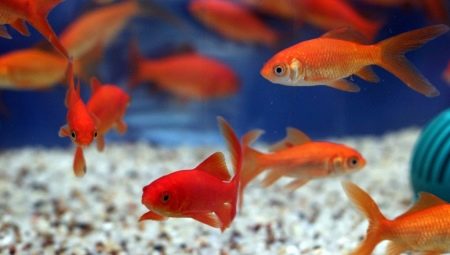One of the most distinguished by its beauty aquarium inhabitants are goldfish. There are a lot of varieties of goldfish: a lion head, a comet, an orand, a telescope, a veil tail.
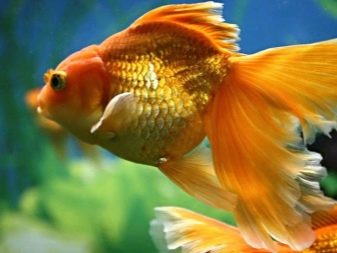
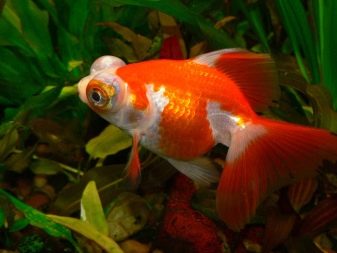
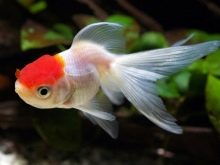
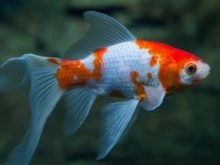
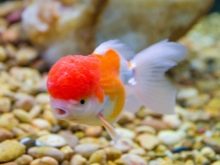
This type of fish does not need special care, they are not aggressive, grow to a decent size, bright in color and quite popular with aquarium breeders.
Description
The goldfish comet belongs to the family of cyprinids, was artificially bred by aquarists, so it is impossible to meet it in the wild. The birthplace of this species is not defined. Although it is believed that the comet appeared for the first time in the USA, and in the sources of the XIX century it is described as a fish from Japan. Perhaps for this reason, the comet is especially popular among Asian nationalities.
The goldfish comet has an elongated, slightly elongated body and a veiled tail, characteristic of goldfish. The tail resembles ribbons developing in water; in relation to the body it is quite long, often it is 2-3 times longer than the body. The fins are also slightly elongated, giving the comet an elegant look. The body is dense and does not have a rounded belly, with the exception of females during the spawning period. The length of the fish can reach 15-20 cm.
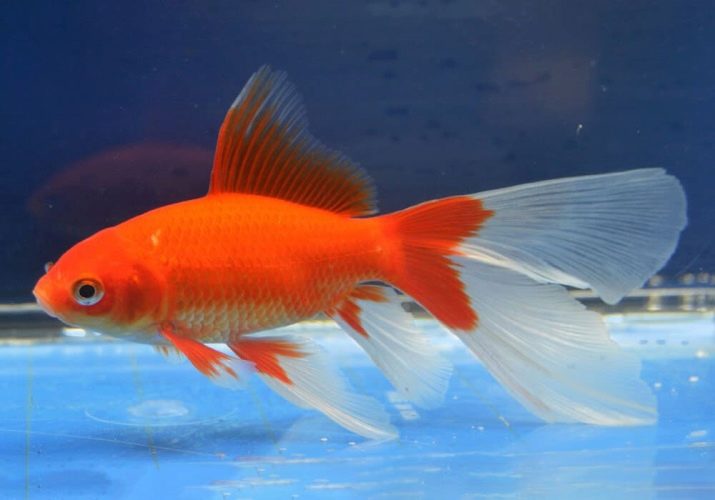
With proper care, this fish is able to live for more than 10 years. The color gamut is quite wide: there are black, golden, red, spotted variations. However, the most common is a red, lemon color with silver scales.
In turn, the type of comet fish has several varieties:
- red - has a bright red color and a rather elegant tail;
- black - has a black coal color and twin tail without a wide cut;
- chintz - with spotty coloring, a long tail and rather miniature dimensions of about 5 cm;
- yellow - has a yellow color, but without a golden ebb, similar to a goldfish, the body is elongated with short fins.

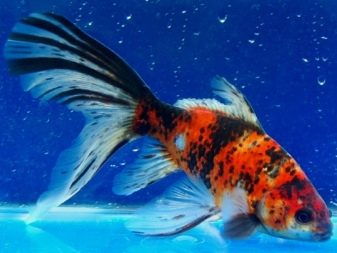
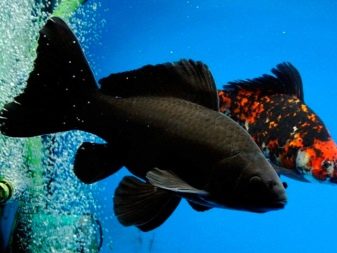
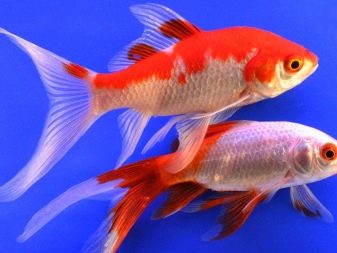
Compatibility
In view of the calm, non-aggressive nature of the comet, it is necessary to combine comets in the aquarium with fish of a similar nature: catfish, thorns, other goldfish, ancytrus, and veil-tails.
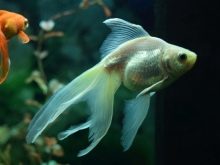
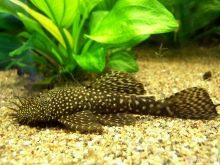
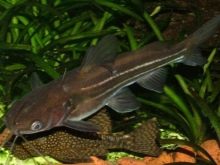
The most incompatible fish are angelfish, tetras, barbs and some others. The consequences of the joint maintenance of obviously incompatible fish species can lead to the death of a comet, as well as damage to its tail and fins. If too small individuals are overshooted as neighbors, then the comet can simply eat them.
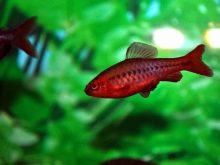
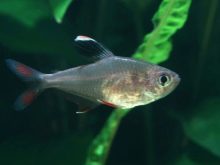
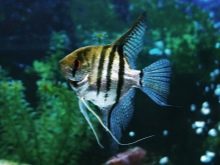
Thus, comets can be kept exclusively with fish that lack predator habits.
Growing conditions and care
The content of comets in the aquarium is simple - just follow certain recommendations.
- The volume of the aquarium should exceed 50 liters, for a pair of fish the volume should be 100 liters. For a comfortable stay, fish should make or purchase houses where they can hide and relax. It can be both vegetation with wide leaves and driftwood.
- This species is quite active, they are able to jump out of the aquarium, which will lead to their death. Therefore, a prerequisite is the presence of a cover.
- Temperature fluctuations of water of 20-25 degrees are allowed. In winter, the use of additional heating using special equipment is recommended; in summer, if necessary, you need to clean the aquarium in a cooler place.
- The pH is less than 8 units.
- Permissible water hardness is from 5 to 17.
- A quarter of the water is recommended daily to maintain a favorable environment in the aquarium.
- The soil should be selected large without sharp parts that could injure the fish.
- One of the rather interesting features of comets is its dependence on lighting. So, if there is not enough light, the fish grows dull and acquires a rather pale appearance, therefore, often the aquarium is installed in a bright place or with additional lighting devices.
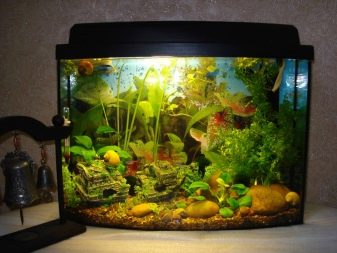
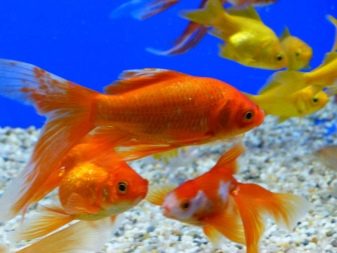
When growing comets, it should be borne in mind that they are quite quickly able to contaminate water with both food residues and secretions. Also, comets like to loosen the soil, as a result of which aquarium plants often die. If you prefer keeping plants in the aquarium along with comets, you should choose vegetation with a powerful root system. It can be Elodea, Wallisneria, vivipar.
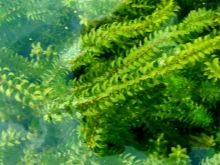
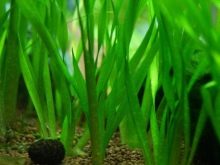
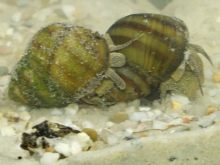
And also in order to avoid the development of rotting processes, it is necessary to provide a good filtration system and compressor installation in the aquarium.
Comets, along with other aquarium inhabitants, may become ill. The most common diseases among them are the following.
- Binge eating. A sign of overeating is a swollen belly, the fish after feeding turns upside down. To solve this problem, you should starve it for a couple of days, and also add a weak solution of potassium permanganate to the aquarium,
- Dropsy. A rather unsightly disease, accompanied by a raising of the scales, bulging eyes and curvature of the spine. In this case, it is necessary to relocate the sick individual separately from other inhabitants of the aquarium, daily change its water with the addition of a weak solution of potassium permanganate,
- When water poisoning or a poor filtration system, scabies appears. A sign of this disease is that the fish itches on the surface, is nervous, lethargy is observed. The treatment is moving the fish into slightly salted cool water,
- Often you can see the fish swim upside down. This is a sign of a shifter.Measures to restore the fish are lowering the water level to 6 cm and changing the water temperature a couple of degrees higher than under ordinary conditions. In the quarantine period only live food is permissible.
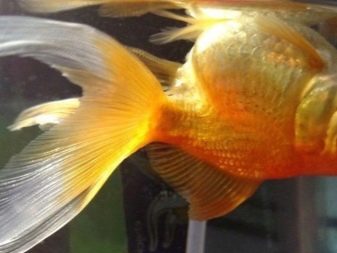
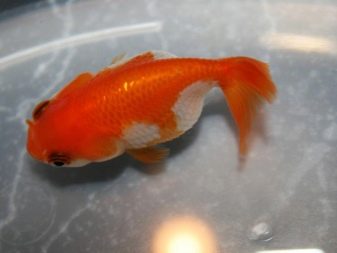
What and how to feed?
Comets are distinguished by a good appetite, so fish feeding should be monitored. The menu should be composed of both vegetable and live or frozen food with the addition of dry feed sold in pet stores. Leftovers should be removed approximately 15-20 minutes after feeding.
For food use artemia, rotifers, daphnia, cyclops. Also suitable bloodworm. As for plant foods, you can cut them into small pieces cucumbers, lettuce or spinach.
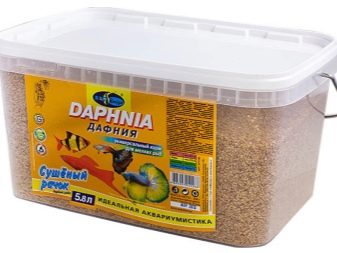

Feeding is allowed in the form of cereals - buckwheat or rice. Feeding is done 2 times a day.
Although the fish are not too picky in food, you should be careful not to overfeed. It can provoke diseases of the digestive system. It should be remembered that comets can easily tolerate hunger strikes for up to 2 days.
Sexual differences and reproduction
Like most living things, comet fish vary by sex. Nature provided for the following differences.
- Females are more active than males in behavior, and also have a brighter color and larger sizes. Fins in females are slightly pointed, the anus is convex, the belly is rounded during the breeding season and slightly swells.
- Males are less active, have rounded, slightly short fins. The anus is hard, the back of the abdomen has an outgrowth, the anus itself is concave. During the breeding season, the male can be distinguished by the following feature - white stripes appear near the gills.
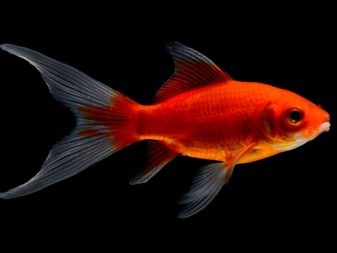
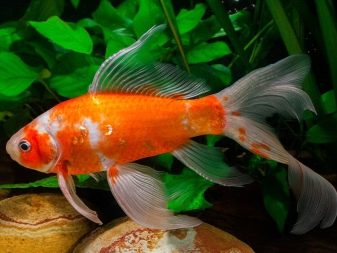
For the reproduction of comets, a separate capacity of 30 to 50 liters is used. Here spawning takes place, and subsequently - fry cultivation. The female and the males should be chosen over two years old. To speed up the process, the water temperature can be increased by 2-3 degrees.
After fertilization, the female can sweep up to 10 thousand eggs. After spawning, males and females are moved to a separate aquarium, as they can swallow eggs and fry.
The fry appear in about 1-2 weeks. Then, during the second half of next week, they become able to consume feed. As food, you can use live dust, daphnia.
Golden comet fish will decorate your aquarium. The graceful structure of the tail and fins will not leave indifferent fans of aquariums. Fish requires easy maintenance, and with proper care, it can please the eye for a fairly long time.
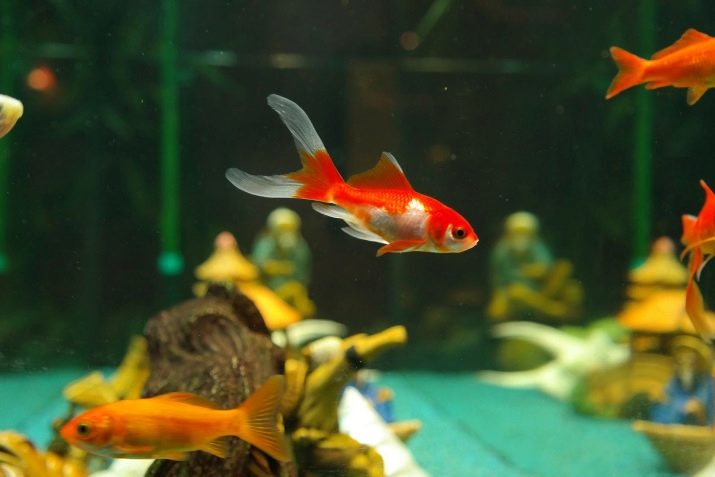
About the features of the comet fish, see the video below.
